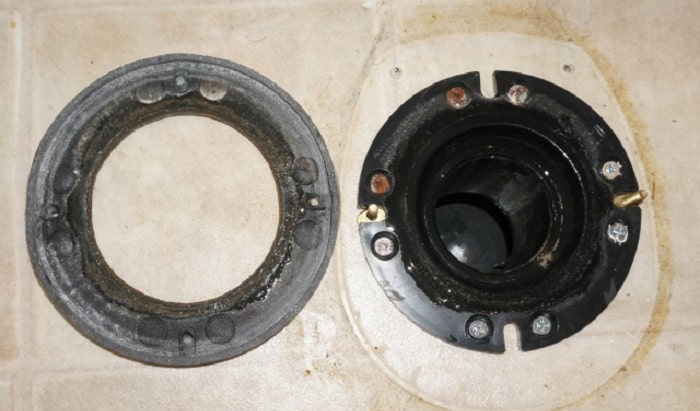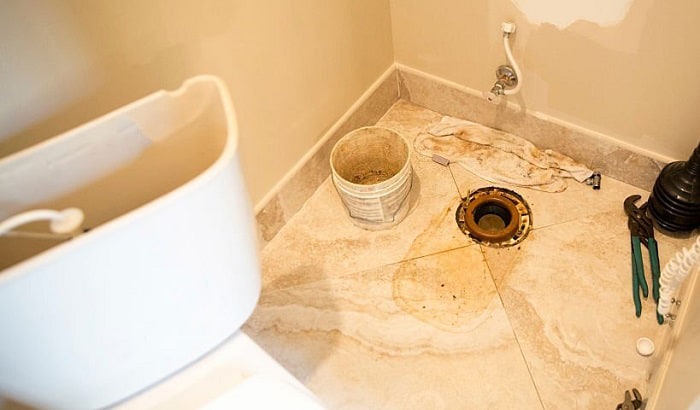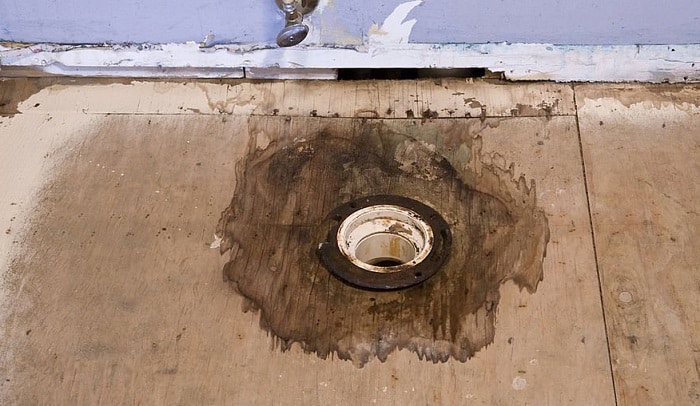What is a toilet flange? For your information, a toilet floor flange is a pipe fitting that links the toilet drain to the drainage system.
In a toilet mounting flange structure, a wax ring and rubber gasket are important parts to prevent leakage. Its diameter depends on the drainpipe’s size, but the toilet flange sizes are 3 – 4 inches.
The flange must snugly fit the pipe for securing parts together, or else issues will arise. It’s responsible for the stability of the toilet and keeps the odor from getting into the bathroom. Although it stays hidden, you have to know its importance.
Table of Contents
Toilet Flange: What’s It?
The word ‘flange’ is derived from the French word ‘flanchir’. This Old French word means ‘to bend.
The application of this piece of equipment is versatile:
- It can be found in the plumbing system, which is used to connect pipes and fixtures in cylindrical form,
- The flange is also incorporated as a securing piece in camera lenses and train wheels.
The toilet flange is inserted to make sure the drain pipe aligns with the toilet. It is responsible for blocking the leaks from the toilet. Therefore, water will soak your floor if the toilet flange does not work. It will be worse if the toilet floor is made of wood.
Oatey toilet closet flange is an excellent example as it has a test cap that can be quickly taken and cleaned. A Spigot toilet flange is also from Oatey, and it’s known for its good fit.
Aside from making sure that your toilet bowl flange or street toilet flange is tightly placed, you should know other important factors.
What Are the Types of Toilet Flange
PVC – PVC toilet flanges are commonly used. Besides being an affordable option, it’s strong, lightweight, and durable. It’s not prone to rusting as, well.
Aluminum – It’s called an aluminum flange, even though the part that gets in contact with a wax ring is the only one made of aluminum. Indeed, this type of flange is widely used due to its lightness, durability, and resistance to rust and corrosion. Therefore, this type of flange will last longer, requiring less maintenance and replacement.
Copper – Copper flanges are also the common choice due to their corrosion resistance. There are two types of copper flanges: rigid and soft; both can ensure good durability. Furthermore, as a biostatic, it has resistance to fungi, bacteria, and viruses.
Brass – Brass is as tough as copper in resisting corrosion, yet a tad better in resisting high heat. Furthermore, these materials can handle the organic matter when the waste decomposes. However, being a heavy metal flange for a toilet, the presence of air can cause oxidation of the brass.
Cast iron – This type of flange is solely for cast iron pipe. It’s unique as it has a pipe extension that can get and fit into the drain.
Stainless steel – A stainless steel flange promises the tightest seal! Just like an aluminum flange, only the part that fits the wax ring is made of steel that doesn’t rust or corrode. The rest of the flange is composed of cast iron, copper, or plastic.
ABS – There are also ABS flanges for toilets, yet these products are available at a higher price range. They are also very durable, even more than PVC products, lightweight, and rust-resistant.
Read more: What’s the difference between ABS and PVC toilet flange?
Toilet Flange Sizes
The size of a standard toilet flange is referred to as its diameter, usually 4 inches and 3 inches.
- 4 inches – This diameter belongs to the products often attached to the toilet in our house. It fits most toilets.
- 3 inches – This diameter is of flanges that belong to the bottom part and is linked to the drain pipe.
You can also find flanges that have a 3-inch diameter on top and bottom. Due to similar openings on both sides, the installation of this flange is relatively easier. However, this is only applicable if you have 3-inch pipes.
On rare occasions, you’ll find flanges with both openings of 4-inch diameter. But this type of flange is utilized in industrial applications. Modern toilets are not the only ones that need a flange, as old models also do.
However, the 14-inch rough-in of the old toilets should be considered when getting a flange. A toilet offset flange comes in this picture. It has a 3×4 size as well, but its opening doesn’t directly fit the pipe since it’s a flange with an elbow.
Just as the name suggests, it has an offset center. Despite the gaps or spaces, you can move the toilet’s location either to the front, back, left, or right to adjust to the 14-inch rough-in of your toilets.
Problems With Toilet Flange
You’ll know the importance of toilet flange once you know the problems that arise when something’s wrong with it. As long as it’s installed properly and not damaged, nothing will trouble you.
However, it can cause a leak, unpleasant odor, and wobbling of a toilet when it’s not in proper placement. Furthermore, here are the other problems with a toilet flange that you can encounter.
- Improper placement on the flooring
You have to ensure the right flange installation so you won’t need to fix leaking issues later on. Regarding this matter, you’ll need to adjust the flange’s height and correct the spacers. You may need to add a toilet flange extender to make sure that it’s on the right level.
See that you securely install a toilet flange on concreteso there will be no issues when flushing the toilet. Or else, toilet water will be everywhere.
- A clogged flange that leads to unpleasant smell
When you’ve discovered toilet backups, it is likely a clogged or blocked flange. With a toilet plunger, you can try to fix the blockage. If not, you need to contact a plumber.
- Cracked or broken flange that causes leaking
A cracked or broken flange can cause pooling at the toilet’s base. After you confirm the case, you have to resolve it by replacing the toilet flange. You have to get a new one that suits your toilet and pipes.
FAQs
Is toilet flange necessary?
A toilet flange is necessary to prevent leaks whenever you flush waste into your toilet. Without it or even incorrect installation can give you troubles. First and foremost, the toilet won’t be secured in its place.
You can bolt a toilet on the floor in a theoretical aspect, but sewer leaks and rotting floors arise are the consequence of not having a toilet flange. During installation, it will be hard to align the toilet with the drainpipe when there’s no flange.
What happens if the toilet flange is broken?
If the toilet flange is broken, it means that the toilet is not secure. It happens because the flange acts as an anchor to the subfloor. Thus, the continuous rocking of the toilet breaks the wax seal that holds the toilet and flange. Every time you flush the toilet, leaks appear.
When should I replace my toilet flange?
Due to consistent exposure to water, toilet flanges can break or crack after some time. Still, a quality flange can be in service for many years. You’ll know that it needs to be replaced when there’s a leak at the bottom of the toilet.
Another sign is that the toilet becomes unstable as it rocks back and forth when you sit on it. When you check the flange upon seeing these signs, it’s likely broken.
Can I repair or replace a broken toilet flange myself?
It’s considered a DIY task, so you can repair or place a toilet flange by yourself as long as you’re willing to do every step. Just to be sure, look at the installation diagram for guidance.
When setting a toilet flange, you have to also replace the wax ring. Once you put them together, you can mount the toilet back.
Read more:
Conclusion
What is a toilet flange? It’s a hidden pipe fitting that connects the toilet and pipe. If it’s not available, leaks will appear every time you flush the toilet. It can get worse as a bad odor from the sewer can fill your bathroom.
When a flange is broken or absent, your toilet becomes wobbly. It will rock back and forth when you sit on it. Hence, these consequences tell you the importance of a toilet flange. So, it’s one of the important things you must pay attention to whenever you change the bathroom’s flooring or replace the toilet.

I’m Paulk Webb, and I work as a writer for Saveourwaterrebates. I’m happy to put in the time and effort to conduct market research to identify the most pressing issues faced by households concerning their plumbing. Feel free to check out our guides to get the most informed recommendations for how to solve your problems.




